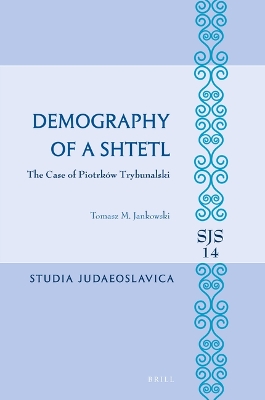Studia Judaeoslavica
1 primary work
Book 14
This quantitative study of Piotrków Trybunalski traces the evolution of the population in the typical early modern semi-agrarian town in which the majority of activity was concentrated in the Jewish suburbs into a provincial capital in Congress Poland. Through the use of longitudinal aggregations and family reconstruction it explores fertility, mortality, and marriage patterns from the early nineteenth century, when civil records were introduced, until the Holocaust, revealing key differences as well as striking similarities between local Jews and non-Jews. The example of Piotrków set in a broader European context highlights variations in the pre-transitional demography of Ashkenazi Jewry and lack of universal model describing the “traditional” or “eastern European” Jewish family.
